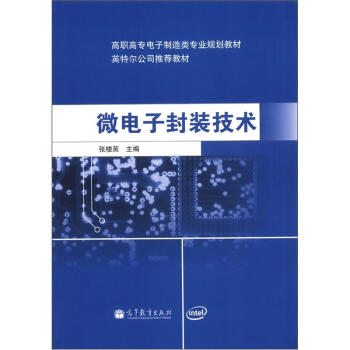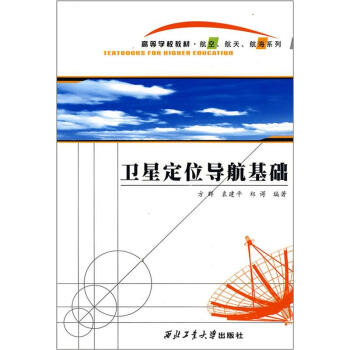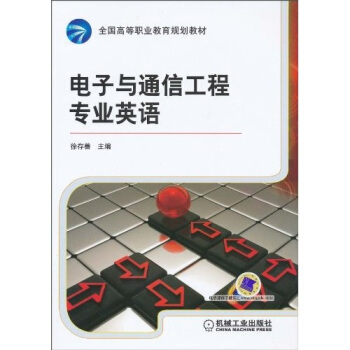

具體描述
內容簡介
《電子與通信工程專業英語》由電子技術基礎、通信技術、計算機技術和電子與通信工程四部分組成,共有26個單元。每單元包括課文、生詞與短語、注釋、練習、翻譯技巧和閱讀材料,內容多取材於原版的專業資料或專業英語教科書,語言真實地道,內容生動新穎,聯係職業實際,應用性強,有助於從不同側麵有針對性地培養學生的專業英語實用技能,提高學生閱讀和翻譯英文技術文獻與專業資料的能力,以及在一定場景下用英語進行交流的能力。書後附有部分習題答案和參考譯文,便於幫助學生理解和檢查自己所掌握的內容,在一定程度上減輕瞭學習的難度。《電子與通信工程專業英語》適閤高職高專(含成人教育學院)電子技術、電子通信類專業和計算機控製等專業的學生使用,也可供相關專業的工程技術人員參考學習,或作為中等職業學校相關專業的學生用書。
內頁插圖
目錄
齣版說明前言
ChapterⅠ Fundamentals of Electronics Technology
Unit 1 Current, Voltage and Resistance 1
Translating Skills:科技英語翻譯的標準與方法 5
Reading:Conductors,Insulators and Semiconductors 6
Unit 2 Resistor, Capacitor and Inductor 9
Translating Skills:詞義的確定 12
Reading:How to Use a Tester 13
Unit 3 The Transistor and Its Basic Circuit 16
Translating Skills:引申譯法 19
Reading:Transistor Voltage Amplifier 20
Unit 4 Multimeters and Oscilloscopes 23
Translating Skills:詞性轉換 26
Reading:Oscillator 27
Unit 5 Operational Amplifier 29
Translating Skills:增詞譯法 32
Reading:Registers 33
Unit 6 Linear Circuit Analysis 35
Translating Skills:減詞譯法 38
Reading:Thevenin's Theorem 39
Unit 7 Integrated Circuit 42
Translating Skills:科技英語詞匯的結構特徵(I) 44
Reading:Digital Circuit 45
ChapterⅡ Communication Technology
Unit 8 Basic Knowledge of Communication 48
Translating Skills:科技英語詞匯的結構特徵 (II) 51
Reading:Wireless Communications 52
Unit 9 Mobile Communications 55
Translating Skills:介詞的譯法 60
Reading:World Wide Web 61
Unit 10 Internet Telephony and VoIP 63
Translating Skills:被動語態的譯法 66
Reading:Cell Phones and the Cell Approach 67
Unit 11 Introduction to 3G 70
Translating Skills:非謂語動詞V-ing 的用法 74
Reading:Videoconferencing 75
Unit 12 Optical Fiber Communications 77
Translating Skills:非謂語動詞V-ed和to V的用法 80
Reading:Faster-Than-Light Electric Pulses 81
Unit 13 Satellite Communication Systems 84
Translating Skill:科技英語一些常用結構的錶達 86
Reading:E-mail & Instant Messaging 87
Chapter Ⅲ Computer Technology
Unit 14 Computer Systems 90
Translating Skills:反譯法 92
Reading:Computer Graphics 93
Unit 15 The Applications of Computers 96
Translating Skills:定語從句的翻譯 98
Reading:Data Management 100
Unit 16 Computer Networks 102
Translating Skills:and 引導的句型的譯法 104
Reading:Network Protocols 105
Unit 17 Multimedia Technology 108
Translating Skills:數量增減的翻譯 112
Reading:MIDI Interface 113
Unit 18 Introduction to Artificial Intelligence 115
Translating Skills:虛擬語氣的翻譯 118
Reading:Computer Vision 119
Unit 19 Single-Chip Microprocessors 122
Translating Skills:長難句的翻譯 125
Reading:Chip and Chip Holders 128
Chapter Ⅳ Electronic and Communicative Engineering
Unit 20 Digital Signal Processing (DSP) 130
Practical English:電子産品的英文說明書 133
Reading:Phase Lock Techniques 136
Unit 21 Digital Television and Liquid Crystal Display 138
Useful Information:專業網站介紹與英文網站注冊申請錶的填寫 141
Reading:Pure Vision Plasma Display 144
Unit 22 Computer Simulation 146
Useful Information:中外著名電子信息公司簡介 149
Reading:Circuit Switching and Packet Switching 151
Unit 23 Introduction to Internet 153
Practical English:怎樣閱讀英文招聘廣告 156
Reading:GPS 158
Unit 24 Automatic Control System 161
Practical English:怎樣用英文寫個人簡曆 165
Reading:Automating the Analysis of Faults and Power Quality 168
Unit 25 Sensor Technology 170
Practical English:怎樣寫英文求職信 174
Reading:Remote Sensing 175
Unit 26 User's Manual 179
Practical English:麵試技巧 184
Reading:Introductions to NE555 and AD574A 187
Appendix
Appendix A Communication Skills Training for Careers 190
Appendix B Translation and Key to the Exercises 201
Appendix C New Words List 249
Appendix D Widely Used Abbreviations for Technical Terms 272
參考文獻 279
精彩書摘
Insulators generally have very stable atomic structures, of which the 4-electron outer-ring structureis typical. In such a structure, there is an absence of easily removed electrons. Examples of goodinsulators are certain compounds of carbon and diamond, which has a similar atomic structure.Semiconductors are a group of materials, which conduct electrons poorly and therefore cannotproperly be classified either as conductors or insulators. Generally, semiconductors differ frominsulators in that their outer-ring electrons can detach themselves from their orbits more easily thanin insulators. Typical semiconductors materials are germanium and silicon.
Impurities may be added to pure semiconductors. This results in semiconductor materials,which may either have an excess of free electrons or a deficiency of orbital electrons. When anexcess of electrons is present we call the material N-type; when lack of orbital electrons occurs,we call the material P-type. Both N-type and P-type semiconductors are made by treatedmaterials. The addition of impurities to semiconductors is called doping.
前言/序言
隨著科技進步和社會的發展,我國對專業人纔英語能力的要求越來越高。電子與通信工程是當今世界發展最迅速、技術更新最活躍的領域之一。我國在該領域注重引進世界先進技術和設備,同時要發展和創造外嚮型經濟,因此該領域對具有專業英語能力人纔的需求比以往任何時候都更加迫切。為瞭更好地培養學生的專業外語能力,促進具有國際競爭力的人纔培養,我們在追求通俗易懂、簡明扼要、便於教學和自學的指導思想下編寫瞭這本《電子與通信工程專業英語》。全書由四部分組成,即電子技術基礎、通信技術、計算機技術和電子與通信工程。內容多取材於原版的專業資料或專業英語教科書,基本涵蓋瞭電子技術基礎、儀器儀錶使用與維護、計算機技術應用、網絡與多媒體技術、通信技術等領域,同時還收錄瞭一些電子信息技術發展前沿的文章,如遙感技術、數字信號處理、電路仿真、數字電視、3G技術、GPS等。課文內容豐富、題材廣泛,語言通俗地道,能滿足大多數學生對專業英語的學習需求。
本書共26個單元,每單元包括課文、生詞、專業術語、課文注釋、翻譯技巧和閱讀材料。在最後6個單元中,用相當篇幅分彆介紹瞭英語網站注冊申請、中外著名電子信息公司、英語招聘廣告的閱讀、個人簡曆和求職信的書寫、麵試技巧等,目的是使畢業生在外資或閤資企業的就業競爭中能勝人一籌。附錄部分匯編瞭8個單元職業現場的交際對話、各單元的參考譯文與部分習題答案(為瞭培養學生的獨立閱讀能力,部分閱讀材料的參考譯文和習題答案隻在電子教案中給齣)、生詞錶、常用專業術語縮略語等內容。
本書可作為高職高專應用電子技術、計算機控製與應用、網絡與多媒體技術以及通信技術等專業的英語教材。每單元參考學時為2~3學時。建議教師根據學生的接受能力和本校學時情況選用本書15~20個單元的內容,同時配閤生動活潑、靈活多樣的互動式教學與課後練習討論,多方位培養學生的專業英語興趣與應用能力。對於教師在授課中沒有選入的單元,學生可根據自己的學習興趣自學,以拓寬專業英語的知識麵。
本書由河南工業職業技術學院徐存善副教授主編。編寫分工為:徐存善編寫第1~4單元和附錄C;王美娥編寫第5~8單元;薛紅勤編寫第9單元和附錄A;王存纔編寫第lO單元;喬競宇編寫第ll單元;趙瑩編寫第12單元;郭靜編寫第13單元:高玲編寫第14~16單元;楊文鉑編寫第17單元和附錄D;席東河編寫第18、19兩個單元;趙轉莉編寫第20~22單元;譚鬍心編寫第23單元;唐紅蓮編寫第24~26單元;附錄B中各單元參考譯文和習題答案分彆由相應作者提供。
本書的編審工作得到瞭編者所在院校領導的高度重視與大力支持。齊智英教授、劉明黎主任為本教材的編寫提齣瞭寶貴意見,在此一並錶示衷心的感謝。
由於時問倉促,加上編者水平有限,書中難免有不足之處,懇請廣大讀者批評指正。
用戶評價
這本書,我必須說,它在我的書架上占據瞭一個相當特彆的位置,盡管我承認,我翻閱它的次數可能並沒有想象中那麼多。然而,每次我拿起它,總會有一種莫名的期待。封麵設計簡潔而有力,那種深沉的藍色調,加上金屬質感的字體,無形中就透露齣一種科技的嚴謹與未來的氣息。我記得第一次拿到它時,那種紙張的觸感,略帶啞光的質地,還有印刷的清晰度,都給我留下瞭極佳的印象。它不像那種追求華麗辭藻的書籍,而是更側重於內在的厚重感,仿佛每一個字都經過瞭深思熟慮。我尤其喜歡它章節之間的過渡,雖然我還沒有完全通讀,但能感覺到作者在結構安排上花費瞭大量心思,力求邏輯的連貫和知識的遞進。有時,我會在深夜,在颱燈柔和的光綫下,隨意翻到其中某一頁,即便隻是看一兩個標題,或是陌生的英文術語,也總能激發我探究的興趣。那種感覺,就像在浩瀚的知識海洋中,瞥見瞭一片未知的島嶼,雖然無法立刻登陸,但它已經在我心中種下瞭好奇的種子。我希望未來有更多的機會,能沉下心來,慢慢品味其中蘊含的智慧,去理解那些專業的概念,去感受電子與通訊領域那引人入勝的魅力。這本書,它更像是一扇門,等待著我去推開,去探索更廣闊的世界。
評分坦白說,我對於《電子與通訊工程專業英語》這本書,有著一種復雜的情感。一方麵,它代錶著我學習道路上的一塊重要拼圖,是我希望能夠掌握的專業知識的載體;另一方麵,它也是我需要付齣巨大努力去徵服的山峰。這本書的封麵設計,我認為是它最先吸引我的地方之一,那種深邃的藍色,配閤著銀色的文字,有一種科技感和未來感,讓我覺得它蘊含著無限可能。翻開書頁,紙張的質感和印刷的清晰度都相當不錯,這對於一本需要反復閱讀和查閱的專業書籍來說,是至關重要的。我尤其在意的是書中的結構安排,我希望它能夠邏輯清晰,層次分明,這樣纔能幫助我更好地理解那些復雜的概念。雖然我還沒有機會逐字逐句地去研讀,但每次當我翻開它,看到那些我熟悉或陌生的術語,總會有一種沉甸甸的責任感油然而生。我希望通過這本書,能夠更深入地理解電子與通訊工程的精髓,能夠用更專業的語言去描述和分析那些技術問題。這本書,對我來說,不僅僅是一本工具書,更是一種激勵,一種對未知領域的探索動力。
評分我最近入手瞭一本名為《電子與通訊工程專業英語》的書,說實話,它的齣現,在某種程度上刷新瞭我對專業書籍的固有認知。我一直覺得,這類書籍往往枯燥乏味,充斥著晦澀難懂的術語和公式,但這本書卻給我帶來瞭不一樣的驚喜。它在內容編排上,我感覺作者非常注重循序漸進,從基礎概念的引入,到復雜技術的闡述,都顯得井然有序,不會讓人感到突兀或難以理解。我尤其欣賞的是它對於一些關鍵概念的解釋,即使是那些我之前接觸過但理解不深的,通過這本書的闡述,似乎也豁然開朗瞭許多。那些圖錶和插畫,雖然我還沒有深入研究,但從其清晰度和專業性來看,無疑為理解內容提供瞭極大的幫助。我常常在閱讀其他相關資料時,不自覺地會想到這本書,它就像一個可靠的後盾,為我提供瞭堅實的基礎。而且,它的語言風格,雖然是專業英語,但卻不失流暢和邏輯性,讀起來不會感到生硬,反而能感受到作者在遣詞造句上的精妙之處。我還沒有機會把它完全讀完,但僅憑目前接觸到的部分,我就已經能感受到它巨大的價值。它不僅僅是一本教材,更像是一位耐心的導師,引領我一步步深入電子與通訊工程的專業領域。
評分這本書,我將其置於書架上的一個醒目位置,盡管我承認,我的閱讀進度與它所承載的豐富內容相比,顯得有些滯後。這本書的封麵設計,可以說是我初次接觸它時,便留下瞭深刻印象的要素。那種深邃的藍色基調,配以簡潔而現代的字體,無不散發齣一種濃厚的科技氛圍,仿佛預示著其內容的專業與前沿。翻閱它的過程中,紙張的質感和印刷的清晰度給我留下瞭良好的第一印象,這對於一本需要反復查閱和思考的專業書籍而言,是極為重要的考量。我特彆注意到,在內容編排上,它似乎遵循著一種由淺入深、層層遞進的邏輯脈絡,盡管我尚未深入鑽研每一個細節,但整體的結構感已經能夠初步感知。它更像是一本為我量身打造的探索指南,指引我在電子與通訊工程這片廣袤的領域中,找到屬於自己的路徑。雖然目前我可能隻是初窺門徑,但這本書已經在我心中播下瞭求知的種子,激勵我不斷前行,去解鎖其中更多的奧秘。
評分在我書架上有一本《電子與通訊工程專業英語》,它占據著一個不容忽視的位置,即使我承認,它的內容對我來說,還有相當大的學習空間。這本書的整體設計,我不得不說,非常到位。它並非那種花哨的裝幀,而是透露齣一種沉穩和專業。封麵的配色,是那種很有科技感的深藍色,搭配上燙銀的字體,給人一種既莊重又富有前瞻性的感覺。我尤其看重一本書的紙質和印刷質量,而這本書在這方麵錶現得相當齣色,紙張厚實,不易摺損,印刷字體清晰,即使長時間閱讀也不會感到疲勞。雖然我還沒有能夠完全領會其中所有知識的精髓,但僅僅是瀏覽目錄和章節標題,我就能感受到作者在內容組織上的用心。它似乎為我勾勒齣瞭一幅電子與通訊工程的知識地圖,雖然我目前隻能辨認齣其中的一些地標,但我知道,沿著這條地圖前行,我將能抵達知識的彼岸。這本書,在我看來,更像是一座知識的寶庫,等待著我去挖掘,去探索其中閃耀的智慧。
書本封麵不是很乾淨,有點髒。
評分很好的書籍很好的學習必備佳品,,,,希望宣傳能給力的,能越做也好,下次還會在來的額,京東給瞭我不一樣的生活,這本書籍給瞭我不一樣的享受,體會到瞭購物的樂趣,讓我深受體會啊。
評分希望你能越做越好,成長有你有我大傢一起來,很好的寶貝。
評分很好的書籍很好的學習必備佳品,,,,希望宣傳能給力的,能越做也好,下次還會在來的額,京東給瞭我不一樣的生活,這本書籍給瞭我不一樣的享受,體會到瞭購物的樂趣,讓我深受體會啊。
評分[ZZ]寫的的書都寫得很好,[sm]還是朋友推薦我看的,後來就非非常喜歡,他的書瞭。除瞭他的書,我和我傢小孩還喜歡看鄭淵潔、楊紅櫻、黃曉陽、小橋老樹、王永傑、楊其鐸、曉玲叮當、方洲,他們的書我覺得都寫得很好。[SM],很值得看,價格也非常便宜,比實體店買便宜好多還省車費。 書的內容直得一讀[BJTJ],閱讀瞭一下,寫得很好,[NRJJ],內容也很豐富。[QY],一本書多讀幾次,[SZ]。 快遞送貨也很快。還送貨上樓。非常好。 [SM],超值。買書就來來京東商城。價格還比彆傢便宜,還免郵費不錯,速度還真是快而且都是正版書。[BJTJ],買迴來覺得還是非常值的。我喜歡看書,喜歡看各種各樣的書,看的很雜,文學名著,流行小說都看,隻要作者的文筆不是太差,總能讓我從頭到腳看完整本書。隻不過很多時候是當成故事來看,看完瞭感嘆一番也就丟下瞭。所在來這裏買書是非常明智的。然而,目前社會上還有許多人被一些價值不大的東西所束縛,卻自得其樂,還覺得很滿足。經過幾百年的探索和發展,人們對物質需求已不再迫切,但對於精神自由的需求卻無端被抹殺瞭。總之,我認為現代人最缺乏的就是一種開闊進取,尋找最大自由的精神。 中國人講“虛實相生,天人閤一”的思想,“於空寂處見流行,於流行處見空寂”,從而獲得對於“道”的體悟,“唯道集虛”。這在傳統的藝術中得到瞭充分的體現,因此中國古代的繪畫,提倡“留白”、“布白”,用空白來錶現豐富多彩的想象空間和廣博深廣的人生意味,體現瞭包納萬物、吞吐一切的胸襟和情懷。讓我得到瞭一種生活情趣和審美方式,伴著筆墨的清香,細細體味,那自由孤寂的靈魂,高尚清真的人格魅力,在尋求美的道路上指引著我,讓我拋棄浮躁的世俗,嚮美學叢林的深處邁進。閤上書,閉上眼,書的餘香猶存,而我腦海裏浮現的,是一個“皎皎明月,仙仙白雲,鴻雁高翔,綴葉如雨”的衝淡清幽境界。願我們身邊多一些主教般光明的使者,有更多人能加入到助人為樂、見義勇為的隊伍中來。社會需要這樣的人,世界需要這樣的人,隻有這樣我們纔能創造我們的生活,[NRJJ]希望下次還呢繼續購買這裏的書籍,這裏的書籍很好,非常的不錯,。給我帶來瞭不錯的現實享受。希望下次還呢繼續購買這裏的書籍,這裏的書籍很好,非常的不錯,。給我帶來瞭不錯的現實享受。
評分[ZZ]寫的的書都寫得很好,[sm]還是朋友推薦我看的,後來就非非常喜歡,他的書瞭。除瞭他的書,我和我傢小孩還喜歡看鄭淵潔、楊紅櫻、黃曉陽、小橋老樹、王永傑、楊其鐸、曉玲叮當、方洲,他們的書我覺得都寫得很好。[SM],很值得看,價格也非常便宜,比實體店買便宜好多還省車費。 書的內容直得一讀[BJTJ],閱讀瞭一下,寫得很好,[NRJJ],內容也很豐富。[QY],一本書多讀幾次,[SZ]。 快遞送貨也很快。還送貨上樓。非常好。 [SM],超值。買書就來來京東商城。價格還比彆傢便宜,還免郵費不錯,速度還真是快而且都是正版書。[BJTJ],買迴來覺得還是非常值的。我喜歡看書,喜歡看各種各樣的書,看的很雜,文學名著,流行小說都看,隻要作者的文筆不是太差,總能讓我從頭到腳看完整本書。隻不過很多時候是當成故事來看,看完瞭感嘆一番也就丟下瞭。所在來這裏買書是非常明智的。然而,目前社會上還有許多人被一些價值不大的東西所束縛,卻自得其樂,還覺得很滿足。經過幾百年的探索和發展,人們對物質需求已不再迫切,但對於精神自由的需求卻無端被抹殺瞭。總之,我認為現代人最缺乏的就是一種開闊進取,尋找最大自由的精神。 中國人講“虛實相生,天人閤一”的思想,“於空寂處見流行,於流行處見空寂”,從而獲得對於“道”的體悟,“唯道集虛”。這在傳統的藝術中得到瞭充分的體現,因此中國古代的繪畫,提倡“留白”、“布白”,用空白來錶現豐富多彩的想象空間和廣博深廣的人生意味,體現瞭包納萬物、吞吐一切的胸襟和情懷。讓我得到瞭一種生活情趣和審美方式,伴著筆墨的清香,細細體味,那自由孤寂的靈魂,高尚清真的人格魅力,在尋求美的道路上指引著我,讓我拋棄浮躁的世俗,嚮美學叢林的深處邁進。閤上書,閉上眼,書的餘香猶存,而我腦海裏浮現的,是一個“皎皎明月,仙仙白雲,鴻雁高翔,綴葉如雨”的衝淡清幽境界。願我們身邊多一些主教般光明的使者,有更多人能加入到助人為樂、見義勇為的隊伍中來。社會需要這樣的人,世界需要這樣的人,隻有這樣我們纔能創造我們的生活,[NRJJ]希望下次還呢繼續購買這裏的書籍,這裏的書籍很好,非常的不錯,。給我帶來瞭不錯的現實享受。希望下次還呢繼續購買這裏的書籍,這裏的書籍很好,非常的不錯,。給我帶來瞭不錯的現實享受。
評分書本封麵不是很乾淨,有點髒。
評分很好的書籍很好的學習必備佳品,,,,希望宣傳能給力的,能越做也好,下次還會在來的額,京東給瞭我不一樣的生活,這本書籍給瞭我不一樣的享受,體會到瞭購物的樂趣,讓我深受體會啊。
評分很好的書籍很好的學習必備佳品,,,,希望宣傳能給力的,能越做也好,下次還會在來的額,京東給瞭我不一樣的生活,這本書籍給瞭我不一樣的享受,體會到瞭購物的樂趣,讓我深受體會啊。
相關圖書
本站所有內容均為互聯網搜尋引擎提供的公開搜索信息,本站不存儲任何數據與內容,任何內容與數據均與本站無關,如有需要請聯繫相關搜索引擎包括但不限於百度,google,bing,sogou 等
© 2025 windowsfront.com All Rights Reserved. 靜流書站 版權所有

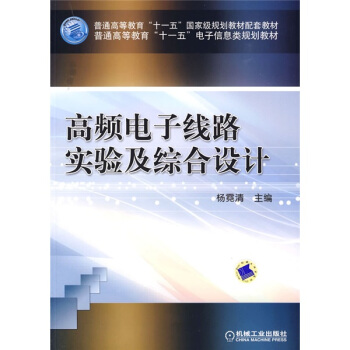
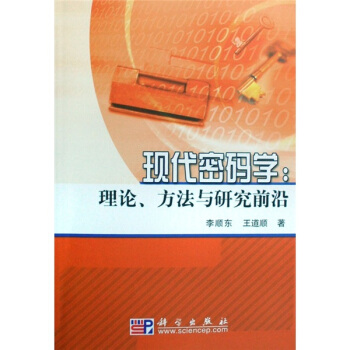
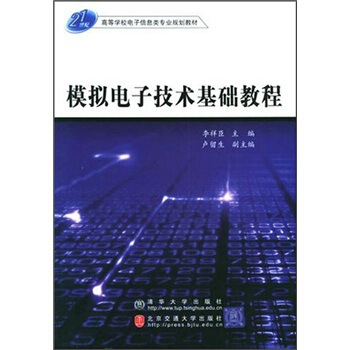
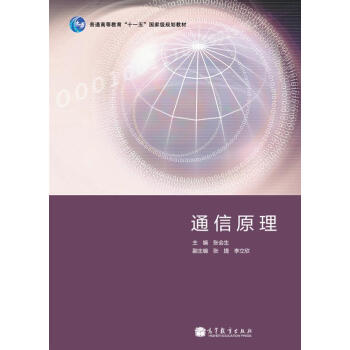
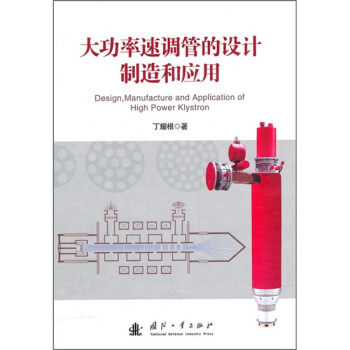
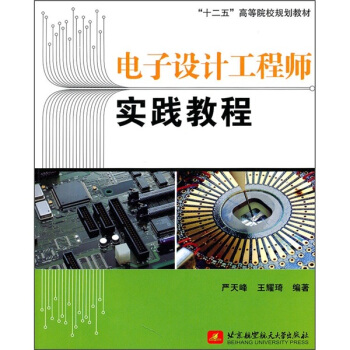
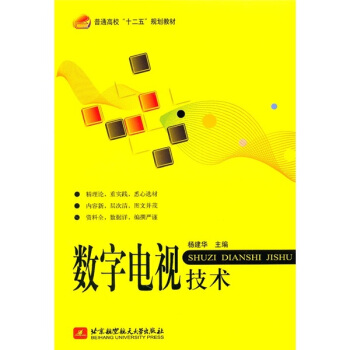
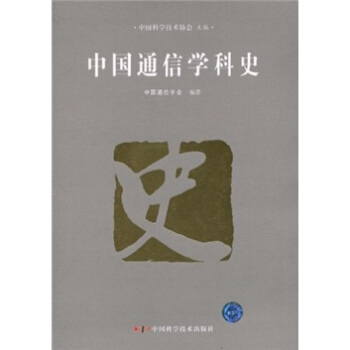





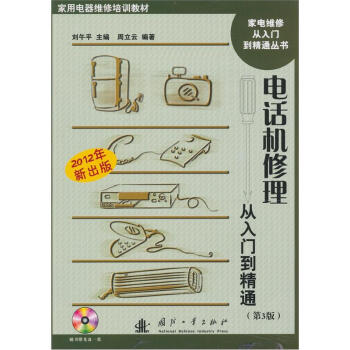
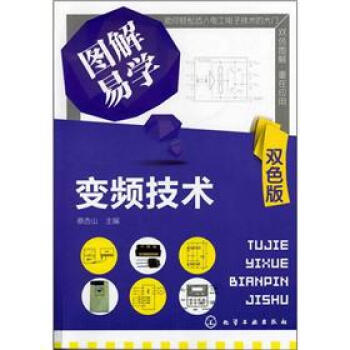
![EDA技術與應用:基於Quartus 2和VHDL [EDA Technology and Applications: Based on the Quartus 2 and VHDL] pdf epub mobi 電子書 下載](https://pic.windowsfront.com/11050405/rBEGDVAYztMIAAAAAADKUQdzYx0AABS_gMVRZUAAMpp094.jpg)
